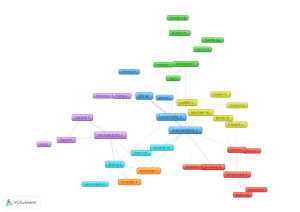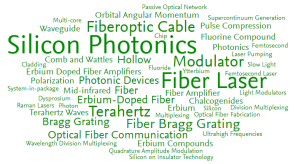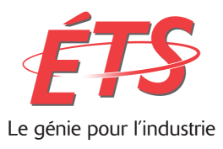Collaborations
Without research partnerships, the COPL would simply never have been created. Since 1989, the Centre and then the Strategic Cluster have existed to allow its members to share their knowledge and resources in order to advance the state of knowledge in photonics and to train the next generation of scientists in this discipline. These are the same two principles that motivate COPL members in establishing their various research partnerships.
Researchers are thus very active in their peer collaborations on a national and international scale. Similarly, the COPL works with all players in the innovation chain. Innovation is thus built at the interface of disciplines and business sectors.
Here’s an overview of COPL’s collaborative ecosystem:
- Peer collaborations
- Partnerships with industry
- Institutional collaborations at the provincial level
- Collaborations with research and development organizations
- Collaborations with institutions internationally
- Regional and national counterparts
Peer collaborations
Covering the period 2019-2002, COPL’s research members published an average of some 456 scientific publications annually.
Always keen to pool their expertise, 50% of publications from 2018 to 2002 by researchers came from international collaborations.
At the same time, the co-publication of articles by cluster members reached an enviable level of 538 publications for the 2018-2022 reference period.
Intra-cluster co-authorship networks and terms that stand out are illustrated here:


Partnerships with the industry
Research is called upon to play a major role in the creation of new companies in optics photonics and also in maintaining the advantageous positioning of existing companies. COPL researchers have always maintained close ties with companies in the field of optics photonics in Quebec. These links have been forged over the course of the sector’s evolution, both through graduates who have found jobs in the industry and through those who have started their own companies based on research and innovation in this highly specialized field.
This proximity to industry allows COPL scientists and their research teams to stay abreast of industry needs, challenges and trends.
This tacit union also allows them to assess the relevance of their teaching and research work and to adapt it to the innovation chain.
The objectives of the COPL in terms of partnerships with industry are:
- to foster the establishment of joint research projects
- to provide a technical support service based on expertise and state-of-the-art equipment
- to organize workshops where COPL members present their expertise and industry representatives present their needs
Institutional collaborations at the provincial level
Research collaborations at COPL began to develop outside the walls of Université Laval in 2002 when researchers in engineering physics from École Polytechnique Montréal joined the Centre. In 2005, COPL continued its expansion by adding a neurophysics research team from the Robert-Giffard Hospital. Finally, by integrating a research community from McGill University, the Institut National de Recherche Scientifique (INRS) and the Université de Sherbrooke in 2008, the École de technologie supérieure (ÉTS) in 2010, Concordia University in 2014 and more recently the Université du Québec à Trois-Rivières (UQTR), COPL has become a multidisciplinary network of experts and a unique reference in optics-photonics in Quebec.
No other organization in Quebec and perhaps even in Canada has such a critical mass of researchers recognized worldwide for the quality of their research and teaching.
Collaborations with research and development organizations
Over the years, COPL, through its researchers, has developed strong links with research organizations in Canada and internationally.
At the Canadian level, since its beginnings, COPL has collaborated with the staff of the Defence Research and Development Canada in Valcartier (DRDC-Valcartier), the National Research Council of Canada and Institut national d’optique (INO).
Collaborations with institutions internationally
Internationally, COPL has collaborations with institutions such as Stanford University (USA), Harvard Medical School (USA), Massachusetts Institute of Technology (MIT – USA), National Institute of Standards and Technology (NIST – USA), Lawrence Livermore National Laboratory (USA), RIKEN Institute (Japan), Shanghai Institute for Optics and Fine Mechanics (China), École Polytechnique Fédérale de Lauzanne (Switzerland), Fraunhofer Institute/Jena (Germany), University of Bordeaux (France) and UNESP (University of Sao-Paulo, Brazil).
The outreach of the COPL research community has led to the establishment of highly successful international scientific collaborations that result in joint publications, student co-directions, faculty sabbaticals aimed at acquiring new theories and practices, participation in thesis juries, and collaborative workshops for the advancement and dissemination of knowledge.
Let’s connect
Whether you're a professor, professional or student, keep up to date with the latest news from our community.
Add or update your profile









































